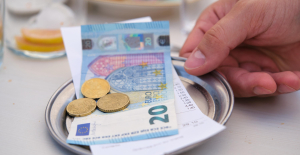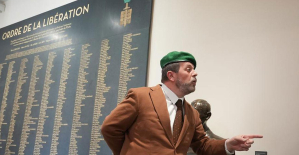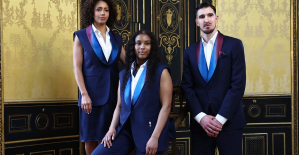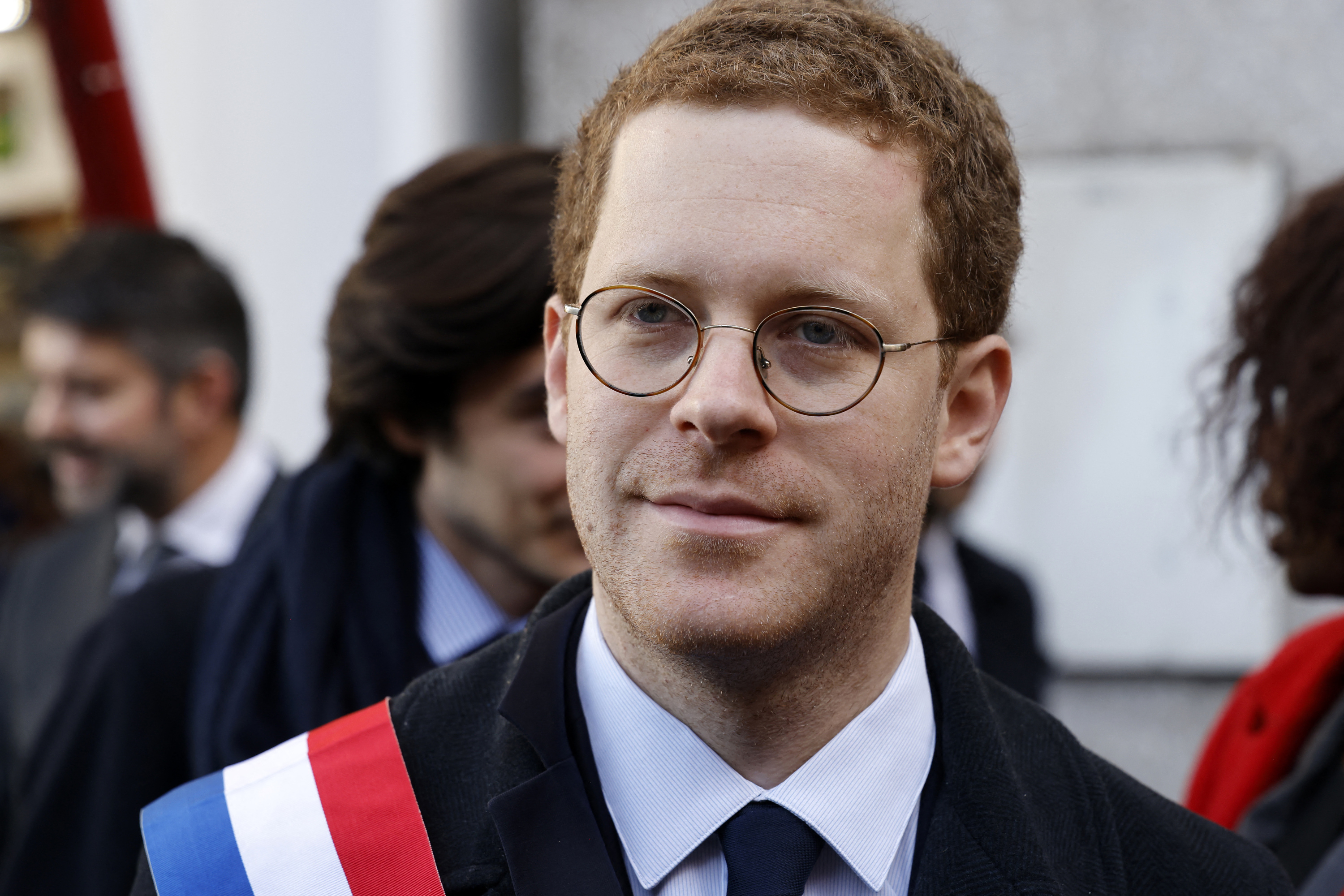Wera Meyer-Waldeck and the sanding block. Everyday life in the Bauhaus carpentry workshop in Dessau, the student works with force on your workpiece. The photo of your classmate Gertrud Arndt shot. Two women, two paths: With an architect diploma in the bag Meyer-Waldeck, in 1932, leaving the school under Mies van der Rohe, signed by Ludwig. She had managed to make it to your carpenter journeyman in fact, in the male-dominated industry "construction planning". Not as Gertrud Arndt, a desire to be a Professional architect. She ended up reluctantly in the weaving class, like most of the Bauhaus members on the inside. "The many threads...!", moaned the young woman.
Whether at the loom or the camera lens, typewriter, or Potter's wheel: women shaped the face of the Bauhaus. But they were not easy between their male colleagues, superiors and partners. Old-fashioned misogynistic structures were stuck in the heads, and also in the own. But the old models of Action have now been redefined – just like the traditional styles, design methods and art forms. Everything is new! "Nothing-Inflammatory is in my outer life, I can me to make, as I want to ..., hardly any barrel I order it," cheered the first semesterin Gunta Stölzl in 1919.
Gunta Stölzl took over the management of the weaving mill
in the first Year 84 student wrote on the inside in addition to 79 students. Founding Director Gropius sounded: "No differences between the beautiful and the strong gender. Absolute Equality Of Rights.“ He wanted to be a radical departure in every way. In addition, the equality of man and woman enshrined in the Weimar Constitution recently. With the enormous female rush, he had not expected, however. The most riege rowed behind the Scenes. Gropius recommended that in the future, "sharp separation, especially in the case of the number occurring in female sex." The women's quota is decreased and fluctuating about a third. In management positions, a Bauhäuslerin on advanced. With the exception of Gunta Stölzl.
she took over the management of the weaving, which has been in place since the 1920's as a women-only class. Energetic and adventurous Stölzl, with your comrades-in-arms, the hand weaving and the industry to modernize the design. Test series, basic research, mastery of Material: Many of the pupils to put what they learned later in the German and international textile companies. Ironically, the woman niche weaving proved himself early on as one of the economically most successful branches of the Bauhaus, a matter of survival for the cash-strapped Institute. The brightly-colored wall carpets and durable upholstery fabrics were in demand. Marcel Breuer's tubular steel chairs would not work without your brilliant covering, neither aesthetically nor practically.
One of the most famous Bauhaus-alumni Anni Albers, who was in exile in the US as a textile artist and design lecturer. Education talent, Benita Koch-Otte brought their Bauhaus experience in the disabled workshops in Bethel. The colourful dish towels Kitty van der Mijll-Dekkers hang to this day in Holland kitchens. But in the creative pool weaving there was also trouble. After a bullying campaign with anti-Semitic undertones Director Stölzl in 1931 announced. A your against game was Grete Reichardt, and later in the GDR, for their imaginative tapestries are highly revered. After 1933, many Bauhaus members went into exile. Some made their career in the service of the national socialists. The Jew taught Friedl Dicker from Vienna in 1942 in the concentration camp of Theresienstadt children in the Painting to give you a Moment of freedom. Their methods were those of the Bauhaus Preliminary course.
It was whispered, kissed, and married
most of The women who came to the Bauhaus, brought a solid arts studies and often work experience. You were motivated. But fun you wanted to have. The American Bauhaus student Lotte Gerson reinforced with your saxophone, the Bauhaus-Kapelle. Bauhaus is also a party zone and an experimental field for the relationship boxes. It was flirting and arguing, joking and talking, smooching and married. 71 Bauhaus-marriages is one of the chronicle. Ise Gropius, earned her the nickname "woman of the Bauhaus" as a journalist, Manager, lecturer and PR Department of the congested heads. Even in American exile, she made together with Gropius for the posthumous fame. Lucia Moholy-Nagy's photographs of the Bauhaus buildings, products and faces were right to do so. The author was exploited and ignored. For decades, the photographer and wife of Bauhaus master Laszlo Moholy-Nagy struggled, allegedly on the run lost Negative back.
Hardly known to be one of the most influential figures of the expressionist Weimar's early years: Gertrud Grunow. The musician was nearly fifty, as Itten and Gropius in 1919 dedicated. Your holistic experimental teaching, called "Practical theory of Harmonisation", has inspired many. Exercises color and light Grunow worked to bring the nervous individualists to the psycho-physical balance: "Dance the color Blue!" Later in Dessau, the Bauhaus umsteuerte in the direction of technology and industry, joined a young gym teacher with short hair cut and athletic vigor to your body. Karla Grosch trained with the Bauhaus staff on the flat roof of the school jump in the air. She was also cast in the ideal, in Oskar Schlemmer's bulky stage Bauhaus dances costumes to perform. 462 women studied at the Bauhaus. The photographer Florence Henri, the Japanese textile specialist Michiko Yamawaki, and Marianne Brandt, designed in the Bauhaus teapots: What they have in common? Nothing. Except that they were women and for a tiny span of your life at a school learned, the radiated hope, to make all things new and different.
More about100 years of Bauhaus "utopia
Linda Buchholzbook recommendation: Patrick Rössler & Elizabeth Otto: "women at the Bauhaus Can". Ground-breaking artists of the Modern age“, Knesebeck Verlag, Munich, 2019, EUR 35

 Rishi Sunak wants a tobacco-free UK
Rishi Sunak wants a tobacco-free UK In Africa, the number of millionaires will boom over the next ten years
In Africa, the number of millionaires will boom over the next ten years Iran's attack on Israel: these false, misleading images spreading on social networks
Iran's attack on Israel: these false, misleading images spreading on social networks Iran-Israel: David Cameron wants the G7 to impose “coordinated sanctions” on Iran
Iran-Israel: David Cameron wants the G7 to impose “coordinated sanctions” on Iran New generation mosquito nets prove much more effective against malaria
New generation mosquito nets prove much more effective against malaria Covid-19: everything you need to know about the new vaccination campaign which is starting
Covid-19: everything you need to know about the new vaccination campaign which is starting The best laptops of the moment boast artificial intelligence
The best laptops of the moment boast artificial intelligence Amazon invests 700 million in robotizing its warehouses in Europe
Amazon invests 700 million in robotizing its warehouses in Europe Solar panels: French manufacturer Systovi announces the cessation of its activities due to “Chinese dumping”
Solar panels: French manufacturer Systovi announces the cessation of its activities due to “Chinese dumping” Tesla: canceled in court, Musk's huge compensation plan will again be submitted to shareholders
Tesla: canceled in court, Musk's huge compensation plan will again be submitted to shareholders Two, three or a hundred euros: who are the most generous customers with tips?
Two, three or a hundred euros: who are the most generous customers with tips? Boeing safety examined in US Senate, after whistleblower's revelations
Boeing safety examined in US Senate, after whistleblower's revelations Immersion among the companions of the Liberation
Immersion among the companions of the Liberation Provence-Alpes-Côte d’Azur releases several hundred thousand euros for the promotion of the work of Marcel Pagnol
Provence-Alpes-Côte d’Azur releases several hundred thousand euros for the promotion of the work of Marcel Pagnol A palm of honor distinguishes Studios Ghibli for all of their work
A palm of honor distinguishes Studios Ghibli for all of their work Gaby, a new play by Pagnol adapted into a comic strip
Gaby, a new play by Pagnol adapted into a comic strip Skoda Kodiaq 2024: a 'beast' plug-in hybrid SUV
Skoda Kodiaq 2024: a 'beast' plug-in hybrid SUV Tesla launches a new Model Y with 600 km of autonomy at a "more accessible price"
Tesla launches a new Model Y with 600 km of autonomy at a "more accessible price" The 10 best-selling cars in March 2024 in Spain: sales fall due to Easter
The 10 best-selling cars in March 2024 in Spain: sales fall due to Easter A private jet company buys more than 100 flying cars
A private jet company buys more than 100 flying cars This is how housing prices have changed in Spain in the last decade
This is how housing prices have changed in Spain in the last decade The home mortgage firm drops 10% in January and interest soars to 3.46%
The home mortgage firm drops 10% in January and interest soars to 3.46% The jewel of the Rocío de Nagüeles urbanization: a dream villa in Marbella
The jewel of the Rocío de Nagüeles urbanization: a dream villa in Marbella Rental prices grow by 7.3% in February: where does it go up and where does it go down?
Rental prices grow by 7.3% in February: where does it go up and where does it go down? Europeans: the schedule of debates to follow between now and June 9
Europeans: the schedule of debates to follow between now and June 9 Europeans: “In France, there is a left and there is a right,” assures Bellamy
Europeans: “In France, there is a left and there is a right,” assures Bellamy During the night of the economy, the right points out the budgetary flaws of the macronie
During the night of the economy, the right points out the budgetary flaws of the macronie Europeans: Glucksmann denounces “Emmanuel Macron’s failure” in the face of Bardella’s success
Europeans: Glucksmann denounces “Emmanuel Macron’s failure” in the face of Bardella’s success These French cities that will boycott the World Cup in Qatar
These French cities that will boycott the World Cup in Qatar Union Bordeaux Bègles-Clermont: at what time and on which channel to follow the Top 14 clash?
Union Bordeaux Bègles-Clermont: at what time and on which channel to follow the Top 14 clash? Football: Ada Hegerberg extends at OL until 2027
Football: Ada Hegerberg extends at OL until 2027 Basketball: suspended for life from NBA for fixing his match
Basketball: suspended for life from NBA for fixing his match Paris 2024 Olympic Games: boxer Estelle Mossely wants to parade on the Seine as a flag bearer
Paris 2024 Olympic Games: boxer Estelle Mossely wants to parade on the Seine as a flag bearer


















